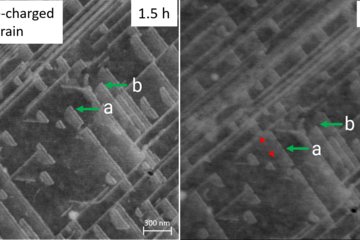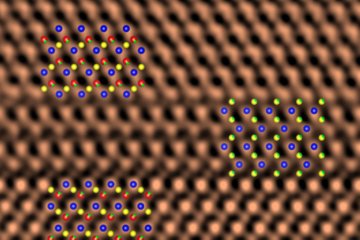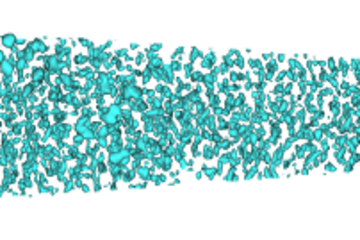All genres
21.
Journal Article
Finite-temperature interplay of structural stability, chemical complexity, and elastic properties of bcc multicomponent alloys from ab initio trained machine-learning potentials. Physical Review Materials 5 (7), 073801 (2021)
22.
Journal Article
Hidden Effects of Negative Stacking Fault Energies in Complex Concentrated Alloys. Physical Review Letters 126 (25), 255502 (2021)
23.
Journal Article
B2 ordering in body-centered-cubic AlNbTiV refractory high-entropy alloys. Physical Review Materials 5 (5), 053803 (2021)
24.
Journal Article
Impact of N on the Stacking Fault Energy and Phase Stability of FCC CrMnFeCoNi: An Ab Initio Study. Journal of Phase Equilibria 42, pp. 551 - 560 (2021)
25.
Journal Article
Beyond Solid Solution High‐Entropy Alloys: Tailoring Magnetic Properties via Spinodal Decomposition. Advanced Functional Materials 31 (7), 2007668 (2021)
26.
Journal Article
A fully automated approach to calculate the melting temperature of elemental crystals. Computational Materials Science 187 (11), 110065 (2021)
27.
Journal Article
Design of compositionally complex catalysts: Role of surface segregation. Journal of Materials Research and Technology 14, pp. 1830 - 1836 (2021)
28.
Journal Article
Surface segregation in Cr–Mn–Fe–Co–Ni high entropy alloys. Applied Surface Science 533, 147471 (2020)
29.
Journal Article
Short-range order in face-centered cubic VCoNi alloys. Physical Review Materials 4, 113802 (2020)
30.
Journal Article
Design of a dual-phase hcp-bcc high entropy alloy strengthened by ω nanoprecipitates in the Sc–Ti–Zr–Hf–Re system. Materials and Design 192, 108716 (2020)
31.
Journal Article
Performance of the standard exchange-correlation functionals in predicting melting properties fully from first principles: Application to Al and magnetic Ni. Physical Review B 101 (14), 144108 (2020)
32.
Journal Article
Combined Al and C alloying enables mechanism-oriented design of multi-principal element alloys: Ab initio calculations and experiments. Scripta Materialia 178, pp. 366 - 371 (2020)
33.
Journal Article
Role of magnetic ordering for the design of quinary TWIP-TRIP high entropy alloys. Physical Review Materials 4 (3), 033601 (2020)
34.
Journal Article
Phonons in magnetically disordered materials: Magnetic versus phononic time scales. Physical Review B 101 (9), 094201 (2020)
35.
Journal Article
Correlation analysis of strongly fluctuating atomic volumes, charges, and stresses in body-centered cubic refractory high-entropy alloys. Physical Review Materials 4 (2), 023608 (2020)
36.
Journal Article
Dislocation-induced breakthrough of strength and ductility trade-off in a non-equiatomic high-entropy alloy. Acta Materialia 185, pp. 45 - 54 (2020)
37.
Journal Article
Unveiling the mechanism of abnormal magnetic behavior of FeNiCoMnCu high-entropy alloys through a joint experimental - theoretical study. Physical Review Materials 4, 014402 (2020)
38.
Journal Article
Frontiers in atomistic simulations of high entropy alloys. Journal of Applied Physics 128 (15), 150901 (2020)
39.
Journal Article
Ab initio vibrational free energies including anharmonicity for multicomponent alloys. npj Computational Materials 5 (1), 80 (2019)
40.
Journal Article
Impact of lattice relaxations on phase transitions in a high-entropy alloy studied by machine-learning potentials. npj Computational Materials 5 (1), 55 (2019)











